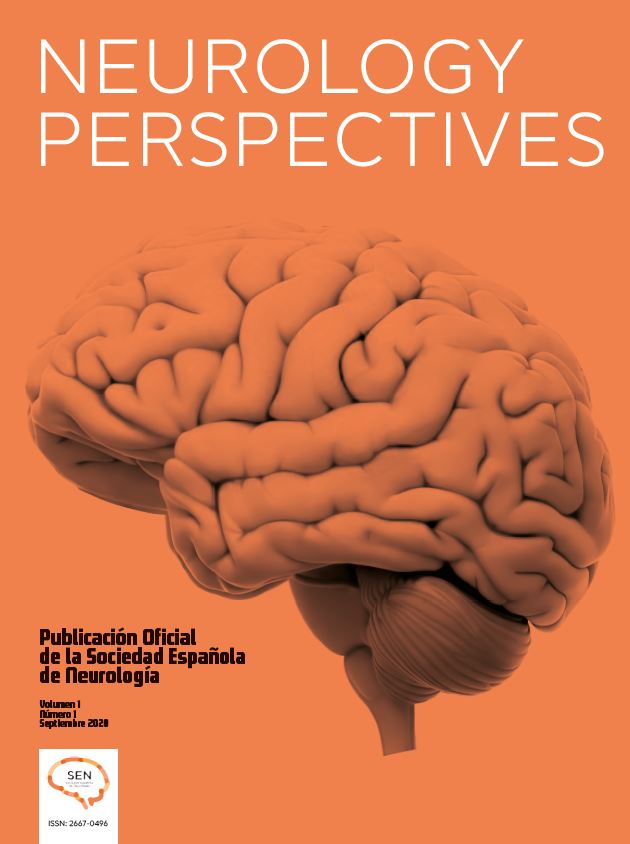Letter to the Editor
We read with interest the article by Nicolas-Sanchez et al. on an 83-year-old female with Guillain-Barre syndrome (GBS), subtype acute, motor, axonal neuropathy (AMAN) upon the clinical presentation, dissociation cyto-albuminique, and nerve-conduction studies (NCSs).1 GBS was attributed to SARS-CoV-2 (SC2) vaccination with the brand BNT162b2 with clinical manifestations appearing 13 days after the second dose.1 In addition, the patient suffered from endocarditis complicated by atrial fibrillation and multiple ischemic strokes.1 Treatment with steroids and intravenous immunoglobulins was only partially beneficial.1 The study is compelling but has limitations that should be discussed.
We disagree with the diagnosis of GBS.1 Elevated cerebrospinal fluid (CSF) protein does not necessarily mean intrathecal protein production. Because the patient had an acute infection that can lead to increased permeability of the blood–brain barrier, increased CSF protein levels are more likely due to increased production outside the CSF space. The patient also had multiple risk factors for polyneuropathy, such as renal insufficiency, marked vitamin-D-deficiency, questionable malignancy, and the acute infection.1 Because certain antibiotics can be complicated by neuropathy, the antibiotics used to treat the infection should be specified. There is no mention whether proximal nerve conduction studies have been conducted. GBS is usually diagnosed using the Brighton criteria.2 Were these criteria met to achieve diagnostic level-A of these criteria?
We also disagree that the SC2 vaccine was responsible for the neuropathy. The patient had several risk factors that could explain neuropathy. Before a neuropathy can be attributed to the SC2 vaccination, all differential diagnoses must be adequately ruled out. SC2 infection must be ruled out by a negative PCR. In addition, GBS is triggered not only by SC2, campylobacter, CMV, EBV, M. pneumoniae, hepatitis, and HIV, but also by Zika, influenza virus, and various vaccines other than SC2.
We disagree that AMAN, AMSAN, and Miller-Fisher syndrome are subtypes of acute inflammatory demyelinating polyneuropathy (AIDP).1 AIDP is the demyelinating subtype of GBS and AMAN/AMSAN the axonal subtype. These 2 subtypes are fundamentally different in NCSs.
We also disagree that the patient was “stuporous”.1 Most likely the authors mean “soporous”. However, since the patient spontaneously opened his eyes, the patient was awake but not soporous.
We also disagree that SC2 infection or vaccination does not increase the risk of superinfection.1 There is increasing evidence that viral, fungal, and bacterial infections are more common during or after SC2 infection/vaccination.3
Furthermore, we disagree that the report describes the first patient with SC2 vaccination-induced AMAN.1 There have been numerous reports about SC2 vaccination-induced AMAN.4
We disagree with the statement that GBS generally presents clinically with an ascending neuropathy of motor or sensory fibers and is complicated by muscle weakness, sensory disturbances, or bulbar dysfunction.1 There is also a GBS subtype that only or predominantly affects the autonomic nervous system.5
The patient was diagnosed with endocarditis.1 We should know the infectious agent of endocarditis and which valve was affected. We should also know the degree of systolic function on echocardiography. Since there was a pericardial and pleural effusion, heart failure is very likely. What was the level of pro-brain natriuretic peptide? Endocarditis can be associated with myocarditis. So we should know if CK, CK-MB, or troponin, were also elevated?
Since some tumor markers were elevated (CA-125, Cyfra, NSE), screening for neoplasia should be carried out and paraneoplastic polyneuropathy ruled out. Since gamma-globulins were elevated, a plasmocytoma or multiple myeloma must be adequately ruled out by a whole-body scintigraphy.
Several other points need to be clarified. Has contrast-enhanced cerebral imaging been performed to rule out meningitis/encephalitis? Negativity for immune encephalitis-associated antibodies does not necessarily preclude immune encephalitis. HbA1c is not mentioned. What was the cause of renal insufficiency? Was there evidence of sepsis? Was procalcitonin elevated? One argument for sepsis is the low platelet count.1 Has a pulmonary embolism been ruled out? No mention is made as to why the patient was regularly taking analgesics and benzodiazepines. How do the authors know that the dysphagia was due to bulbar involvement in GBS and not embolic strokes? There is no mention of the outcome of endocarditis, stroke, and neuropathy.
In summary, the interesting study has limitations that put the results and their interpretation into perspective. Addressing these issues would strengthen the conclusions and improve the status of the study.
Financial disclosures for the previous 12 months: the authors declare that the research was conducted in the absence of any commercial or financial relationships that could be construed as a potential conflict of interest.
Funding sources and conflict of interestNone.
Author contribution(1. Research project: A. Conception, B. Organization, C. Execution; 2. Statistical Analysis: A. Design, B. Execution, C. Review and Critique; 3. Manuscript: A. Writing of the first draft, B. Review and Critique): author FS: 1A, 1b, 1C, 3A, 3B; JF: 1B, 2A, 2C, 3B.
Data access statementAll data are available from the corresponding author.
Ethical compliance statementThe authors confirm that the approval of an institutional review board or patient consent was not required for this work. We confirm that we have read the Journal's position on issues involved in ethical publication and affirm that this work is consistent with those guidelines. This article is based on previously conducted studies and does not contain any new studies with human participants or animals performed by any of the authors.





